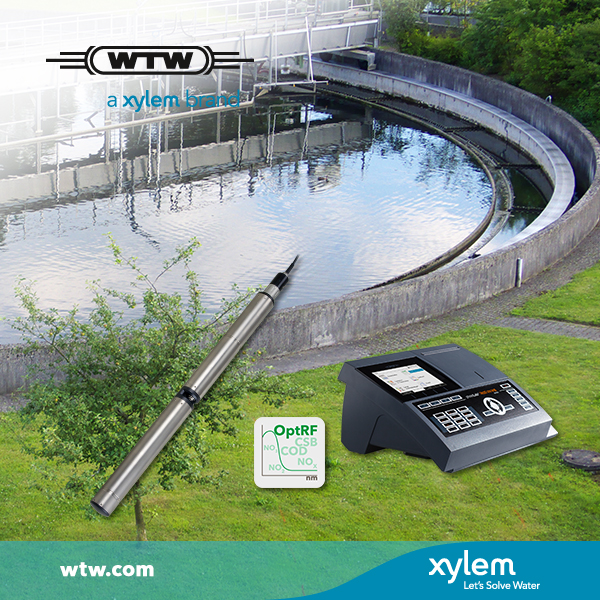
Here you’ll find a short overview of possible measuring methods of the carbon parameters COD and BOD.
To describe the organic load of water, the standard parameters COD and DOC as well as TOC or BOD are used. The most important standard parameters are the Chemical Oxygen Demand (COD) and the Biochemical Oxygen Demand (BOD), while the „Total Organic Carbon“ (TOC) and the „Dissolved Organic Carbon“(DOC), play a minor role. For TOC measurement, the photometric procedure is more sophisticated and bears a wider tolerance level in the results.
COD
The COD is the main sum parameter of water and the indicator of the sewage purification performance. Therefore COD is used to quote the effluent discharge fee. COD determination can be performed and documented with cell tests according to the DIN 15705 standard. COD is determined as Oxygen (in mg/l) which would be needed for oxidation of the organic material, if oxygen would be the oxidant. The result is given as COD or O2 in mg/l.
Methodology:
For the determination of COD the water sample will be strongly acidified and heated up with a defined amount of the strong oxidant potassium dichromate (K2Cr2O7) in the presence of silver sulfate being a catalyst and mercury sulfate to mask interfering Chloride ions . In this so-called digestion at 148°C for 2 hours according to DIN 38409-H41, the dichromate is consumed for the oxidation of organic material. Important is the complete cool down of the sample to allow complete settlement of turbidity particles and thus to avoid faults in the subsequent photometric measurement. So, the photometric COD-determination takes place indirectly by the amount of the remaining dichromate: The consumption of dichromate allows to calculate the equivalent of oxygen O2 respectively COD from the calibration curve at a defined wavelength and to display the measurement result as O2 or COD in mg/l.
The COD determination is time-consuming and involves the use of hazardous chemicals. This is the reason for today’s wide-spread use of photometric cell tests, offering many advantages: Low amount of reagents and ready-made reagent liquids make the application for users safe, easy and faster.
Due to methodology itself with higher tolerances of several percent in the results together with potential error sources such as sludge flakes in individual samples, a double or triple determination is common and according to GLP. There are many test kits available providing different measuring ranges for 3 photometer instrument lines:
OptRF: the Optical Reagent-Free measurement of COD – Online and in the Lab
For self-check of sewage plants, a so-called optical reagent-free (OptRF) measurement is offered. The concentrations are not determined via chemical method based on a calibration curve at a defined wavelength as described in the above mentioned method.
Here, the determination does not take place via a chemical procedure based on a defined wavelength and stored calibration curve like the procedure described above. Instead, the water sample is put directly in a quartz glass cuvette to perform a scan in the UV-VIS range from 200–390 nm and then to output the result directly in mg/l COD. There is no preparation time required. In the OptRF procedure, the scans are evaluated for COD output on base of complex algorithms using real sample information behind. Applications are sewage plant outlets and often surface or river waters.
An additional optimization of self-check with OptRF can be obtained for the individual sewage plant or environment: This is called matrix adjustment and is performed with reference measurements by routine analysis with cuvette tests.
The WTW® online system IQ Sensor Net is the well-proven pioneer of this procedure:
Die Kontrollen über diese stationären Online-Systeme mit reagenzienfreien Online-Sensoren dokumentieren Schwankungen und Spitzenbelastungen kontinuierlich. Das Photometer photoLab® 7600 UV-VIS hat die bewährten optischen Methoden als OptRF für das Labor verfügbar gemacht. Damit kann es gleichermaßen für die Routinemessung mit Testsätzen, zum Matrixadjustment vom IQ Sensor Net via Küvettentest, einer optischen reagenzienfreien Messung und zur vorbereitenden Messbereichsbestimmung via OptRF eingesetzt werden. Der Vorteil ist hier neben geringeren Kosten auch weniger Abfall und Umweltbelastung.
BOD
By determining the degradation of carbons, the BOD is an important parameter for water management, for the quality determination of water bodies and the efficiency assessment of water treatment plants.
Using the official method of BOD5 (DIN EN 1899-1) the concentration of D.O. will be measured in diluted samples before and after incubation. When performing the “BOD self-check measurement” according to DIN EN 1899-2 in a closed respirometer the absorption of the carbon leads to a measurable pressure change and allows the calculation of the BOD. In both cases the samples have to be incubated for 5 days at 20 °C.
General tests on bio-degradation, e.g. soil respiration or bio-degradability of new chemicals can conveniently be carried out using OxiTop® systems
Up-to-date UV-VIS sensors for constant monitoring of WWTP effluents of municipal waste water are capable of measuring BOD as well. It is an indirect method using the spectral correlation between COD and BOD (adjustment with known BOD values from laboratory measurements) to calculate the current BOD.